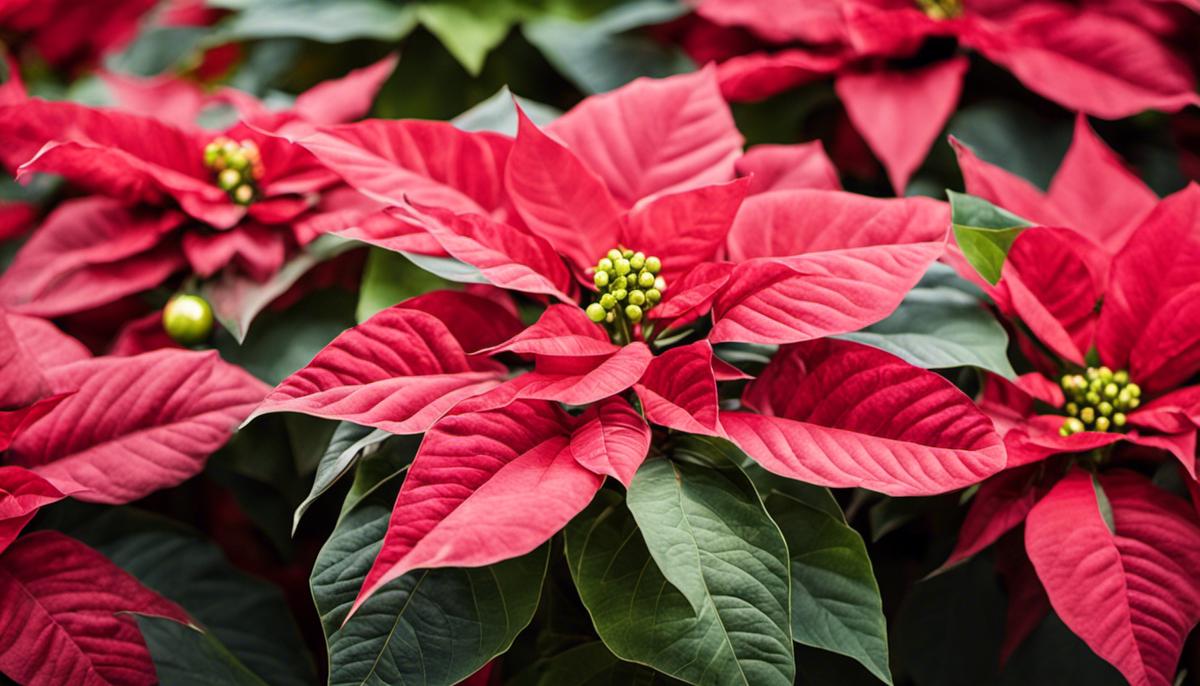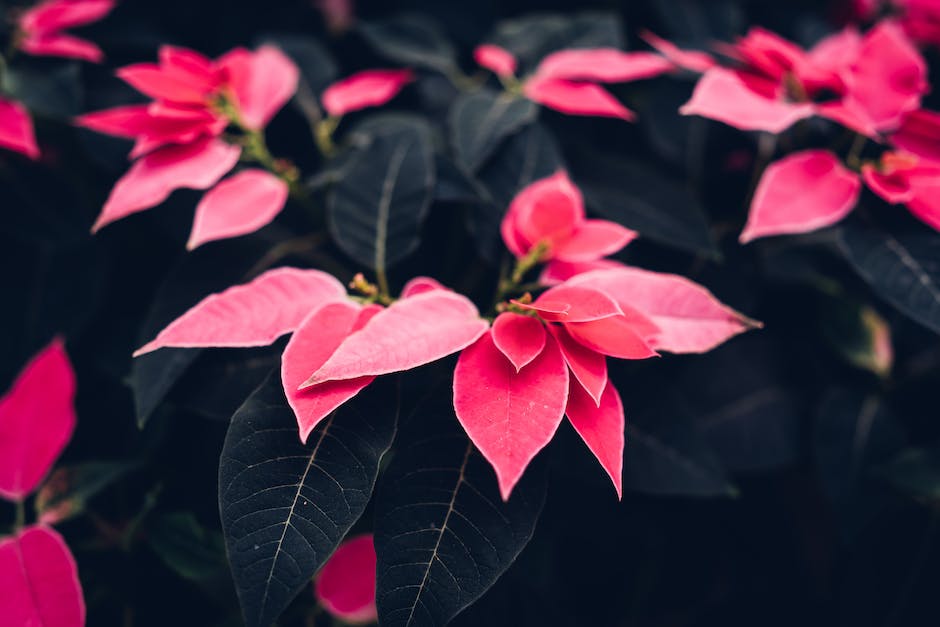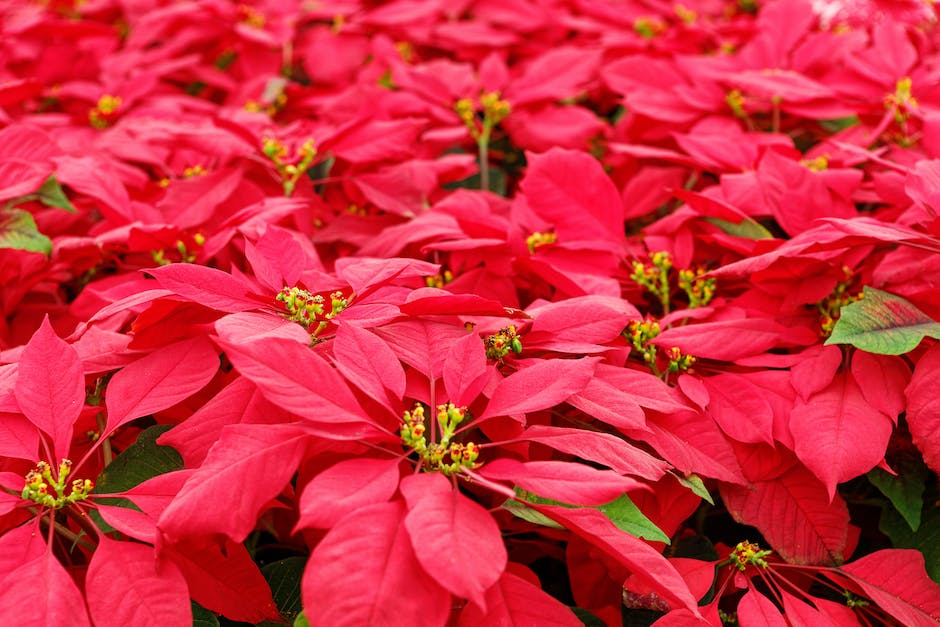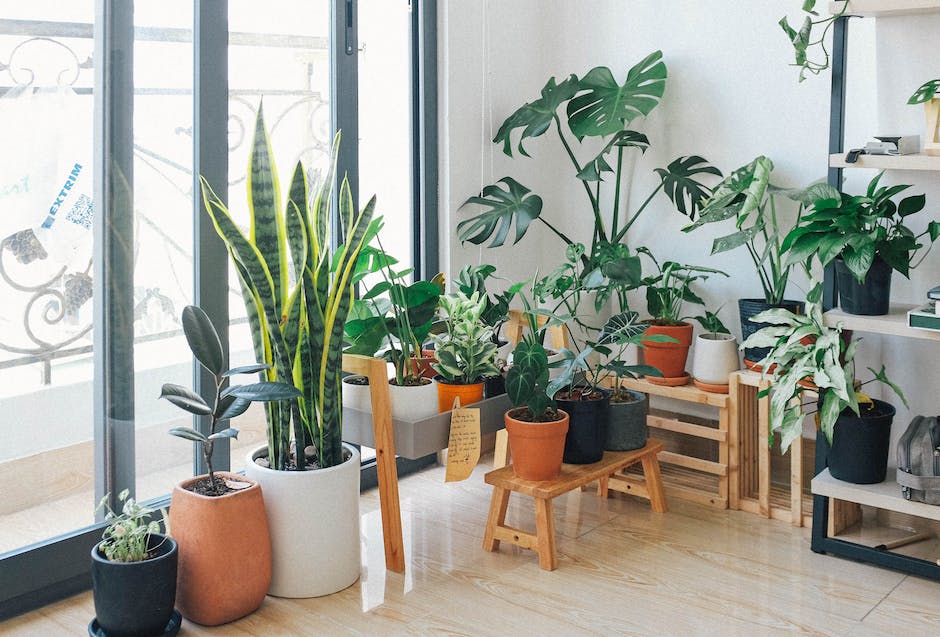Can Poinsettias Thrive Outside During Winter?

Substantial pleasure and warmth are delivered by the rich and festive poinsettias during the holiday season. Hailing originally from the tropical climate of Mexico, these charming plants known for their vivid red and green foliage, have become an integral part of our holiday decorations. Yet, a burning question often arises among poinsettia enthusiasts – Can these tropical beauties survive harsh winter conditions outdoors? This query finds its roots in the understanding of the plant’s inherent nature, its temperature tolerance, light and water requirements, and its preparedness to face winter out in the open. To answer this intriguing question, it becomes indispensable to dive deep into the characteristics and needs of poinsettias, along with exploring potential hazards coming from pests and diseases.
Understanding the Nature of Poinsettias
Hit the snooze button on those ho-hum houseplants for a moment and let’s shift gears to the superstars of the winter season – poinsettias! Bursting onto the scene with an array of captivating colors, these phenomenal plants capably command the holidays, but there’s plenty more to them than just their Christmas charm.
Renowned worldwide for their vibrant crimson and green hues, poinsettias (Euphorbia pulcherrima) jingle all the way from the tropical deciduous forests of western Mexico. Yes, that’s right, Mexico! These sun-loving shrubs thrive in the moist, warm climates of coastal region lined up from Guerrero down to Chiapas. In the wild, poinsettias can reach towering heights of up to 12 feet, quite a leap from your coffee-table-specimen, isn’t it?
Moreover, behind the red “blooms” famed for their festive flair, lies an intriguing fact. Those brilliant, luminous reds are not flowers at all, rather they’re modified leaves, or bracts to be precise. The actual flowers of the plant are the tiny, unassuming yellow clusters, known as Cyathia, nestled in the center of these bracts, quite a fun trivia to throw around at your next Christmas party!
The tale behind their nomenclature is well worth a mention. Named after the first US Minister to Mexico, Dr. Joel Roberts Poinsett, these plants have not only weathered the sands of time but have traveled far and wide, from touchy tropical terrains to cozy corners of American living rooms. Dr. Poinsett, an enthusiastic plant-lover himself, introduced them to the US in 1825, and since then, they’ve become an integral part of holiday decorations and traditions.
Making a poinsettia thrive in a container can be a bit of a barefoot-on-a-Lego-block situation for some. But no worries! Indirect light, temperatures between 65-75°F, and careful, not overbearing, watering – that’s all it takes to make your poinsettia feel right at home. It can be a magical experience witnessing those green leaves transition to a vivid red as the days get shorter and the festive season approaches.
So, why are poinsettias so intertwined with the Christmas season? The association stems from a charming Mexican legend of a young girl who devoid of a gift, offered a bouquet of weeds to Jesus on Christmas Eve, which miraculously bloomed into red poinsettias. Conventionally, the plant’s vibrant transformation aligns with the festive period, reinforcing the connection and rightfully earning it the title of “Christmas Star”.
To wrap this up, poinsettias, in their myriad forms – red, white, pink, or speckled – offer a delightful spurt of cheerfulness and brightness, a perfect antidote to driveling, dreary winters. Beginning their journey in the sun-kissed tropics of Mexico, they charm the globe, reinforcing the holiday spirit, and bringing a splash of warmth to your festive hearth. Indeed, it’s not just a captivating plant, it’s a whole historical, botanical journey packed into those vibrant bracts. So, the next time you see a poinsettia, instead of casually passing it off as a Christmas decoration, pause and appreciate its colorful, compelling journey.

Temperature Tolerance of Poinsettias
Navigating the Thermal Preferences of Poinsettias
When considering the optimal conditions for a thriving poinsettia – that audiences associate with holiday merriment – it’s important to recall their native environment and adapt care accordingly. Just as the festive crowd needs warmth and good cheer, these vibrant plants also thrive in certain temperature conditions.
Poinsettias are famously sensitive to temperature changes and require specific conditions to maintain their festive flair. Ranging from the frosty peaks of North America to the tropical swelter of Central America, the poinsettia’s temperature tolerance is broader than what some might imagine. However, maintaining the balance is key.
The temperature flexibility needs attention because poinsettias prefer consistency. Generally, poinsettias perform well in daytime temperatures of 65 to 75 degrees Fahrenheit while appreciating cooler conditions of 60 to 65 degrees Fahrenheit during evenings. They relish a lovely, comforting warmth gently wrapped around them without extremes.
However, don’t be misled into thinking poinsettias are as delicate as a snowflake! They can endure temperatures as low as 50 degrees Fahrenheit and as high as 80 degrees Fahrenheit. Anything beyond that, our red friends will start to experience discomfort and might start to show signs of fatigue. They may not don a hat or rebelliously ditch their coats, but signs such as wilting and leaf discoloration will indicate if they’re feeling too hot or cold.
With these temperature parameters in place, it’s crucial to remember that poinsettias, despite their festive charm, are not frost-friendly. Frost and fanfare do not mix well for these plants. A sudden winter chill or a snowflake’s rogue ambush can prove fatal. Wayward drafts from open windows, doors, or registers can also cause damage. So, it’s best to keep them housed in a stable and suitable location.
You might be thinking, ‘What about summer, though?’ True, as these plants are tropical natives, they can withstand a period of warm outdoor summer months, as long as they are gradually acclimatized to it. However, do not forget to return them to their temperate haven as the mercury dips going towards fall.
Keeping poinsettias happy is far from a walk in a wintry park, but the rewards are certainly worth all the effort! Get it right, and you’ll have an undeniably sensational display that wraps your home in a bright and shiny festive bow. Not to mention the authenticity you feel when caring for a poinsettia, knowing that you’re joining in an age-old winter tradition that stretches far beyond our borders.

Light and Water Requirements of Poinsettias
Diving headfirst into the truly defining aspects of poinsettia care, let’s touch on two of the most crucial factors: light and water needs. With the right understanding, you’ve got every chance at cultivating an enviable, vibrant poinsettia display that would make any hobbyist’s heart flutter!
First, let’s talk light. Like most flowering plants, poinsettias relish basking in bright, but indirect sunlight. Consider placing them near a south, east, or west-facing window. Approximately five or six hours of light per day should do the trick. But remember, while they love the light, they’re not so fond of the heat. Keep them out of direct sunlight to avoid causing damage to the leaves.
Flash warning, though: poinsettias are short-day plants, meaning they need longer periods of darkness to spark the change in leaf color. This process typically begins in autumn. If you’re up to the task (and why wouldn’t you be?), you might consider moving your poinsettia to a dark room or covering it with a box for about 14 hours each night. After 8-10 weeks, you’ll have triggered a delightful color change in the leaves.
Next, let’s switch gears to hydration. Poinsettias aren’t big drinkers. Curious for plants with such lush appearance, they actually prefer to be kept on the drier side. Wait until the top inch of the soil is dry to the touch before giving it a good soaking. Never let the pot sit in water as it may lead to root rot- a no-no in the poinsettia playbook! And while misting may seem like a good idea, poinsettias aren’t really fans. High humidity can encourage mold and pests.
A note to consider is poinsettias can be sensitive to the type of water used. They’re not too keen on overly hard or fluoridated water. If possible, use rainwater or allow tap water to sit out overnight before use for the best results.
And there you have it, the crux of light and water care for poinsettias. As hobbyists, it’s often the nuances of plant care that keeps us enthralled—the delicate balance of light, water, and love just might elevate your poinsettia prowess to new heights. With these key pointers in mind, you’re well on your way to mastering the art of poinsettia care!

Preparing Poinsettias for Outdoor Winter
Prepping Poinsettias for the Great Outdoors: A Transplant Guide
Taking care of a poinsettia is a significant part of many gardening enthusiasts’ winter activities. Successfully transitioning these winter icons to outdoor conditions can be a thrilling escapade, centered around temperature acclimation, light, and water management.
Devise a Plan for Temperature Acclimation
Starting off, it’s crucial to maintain a systematic approach in adjusting your poinsettias to outdoor temperatures. They’ve become comfortable with the controlled indoor temperatures, so you don’t want to shock them by immediately placing them outside. This process should typically be accomplished in steps over a period of a few days to a week, gently acclimatizing them to the more fluctuating temperatures found outside.
Part of this plan should also involve identifying a suitable place outdoors for your poinsettias that offers suitable temperature conditions. Too much heat or cold could ruin your poinsettias, so ensure the spot provides partial shade and protection from the hottest midday sun or evening chill.
Harness the Power of Sun and Shade
Poinsettias love their sunlight, but direct sunlight could be damaging to them, especially during the hotter parts of the day. Instead, opt for a location where the poinsettia can enjoy morning sunlight and afternoon shade. This ‘best of both worlds’ approach aids in their overall growth.
While you’re considering light requirements for outdoor poinsettias, never ignore the importance of sufficient periods of darkness. Darkness triggers leaf color change in poinsettias and you can manage this even when they are outdoors. A simple mechanism to regulate this could be shifting them to a darker spot or using coverings to darken the environment as needed.
Manage Water Carefully
When it comes to water management for poinsettias, the keyword is “balance”. Too little or too much water can both cause damage. While they are accustomed to the dry climates of their native Mexico, remember to water them when the surface of the soil feels dry to the touch.
Be cautious not to overwater your poinsettias as it’s unsettling for them and can lead to root rot. Steer clear of the temptation to mist your poinsettias. They prefer their leaves dry and aren’t fans of high humidity.
Finally, poinsettias can be somewhat choosy about the type of water they prefer. Distilled or rainwater are the best options. However, if all you have is tap water, allow it to stand in an open container for a while before watering your plants.
With the right preparation, patience, and love, your poinsettias can thrive outdoors, providing you with a continuation of their cheerful and bright presence. Given all the joy that these icons of winter bring, they certainly deserve that extra dedication and care that you put into them. Happy gardening!

Dealing with Potential Pests and Diseases
The Potential Pest and Disease Issues to Look Out for in Poinsettias
A vibrant display of poinsettias can uplift any space during the winter months. However, keeping these beauties in optimum health involves diligence and knowledge of potential pests and diseases that may compromise their vigor.
Pests can be courtesy callers, especially to plants cultivated indoors. For poinsettias, the usual culprits include whiteflies, spider mites, and fungus gnats. The whitefly can pose a significant threat; it’s a tiny white insect that congregates on the undersides of leaves. An untreated infestation can result in weakened plants, stunted growth, and even death.
Spider mites, though minute, can cause considerable damage. They enjoy the undersides of leaves, puncturing plant cells to feed. A grim sign of their presence is a stippling look on the leaves where they have fed, which can eventually lead to leaf drop.
Fungus gnats, on the other hand, are black, mosquito-like pests drawn to the organic matter and moisture in potting soil. They usually don’t harm healthy adult plants but can cause significant damage to seedlings and young plants.
To prevent these pests from wreaking havoc, it’s essential to inspect new plants thoroughly before introducing them to your home or greenhouse. Endeavor to keep the surroundings clean and observe proper watering practices as stagnant water can be a breeding ground for pests.
Inevitable as they may seem, diseases also lurk in wait. One common disease that affects poinsettias is Botrytis blight. This fungal infection causes patches on the leaves, wilted growth, and spots on bract undersides. Damp, cool conditions invite this disease, urging a continued awareness of the need for good ventilation and avoiding excessive moisture.
Another frequent adversary is powdery mildew. This shows up as whitish-gray powdery patches on the leaves. Humidity and crowded conditions are to blame here. Ensuring good airflow and not crowding plants can help keep this at bay.
In some cases, poinsettias can suffer from root or stem rot. Both are caused by fungus thriving in overly wet soil. Preventing this involves not overwatering, and ensuring proper drainage is in place.
Poinsettias are indeed winter champions in the plant world. Yet, like any living thing, they are susceptible to illnesses and pests. A few precautions built into the care routine can go a long way in keeping them healthy and radiant.

So, are you ready to challenge the nature of your poinsettias this winter and try to grow them outdoors? Keep in mind, the survival of outdoor poinsettias in winter aligns significantly with the region’s winter severity, the plant’s specific care, and the proactive steps taken against potential threats. Cultivating poinsettias outdoor in winter is certainly not for the faint-hearted as it requires consistent vigilance and dedicated care. Nonetheless, whether your poinsettias thrive outdoors or prefer the cozy warmth of your home, their vibrant and festive colors are sure to lighten up your winters, bringing joy into the cold and grey season.



